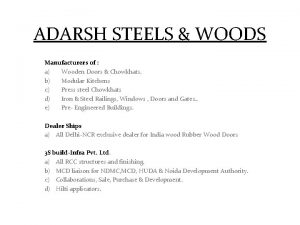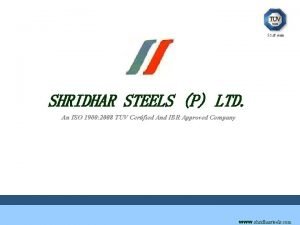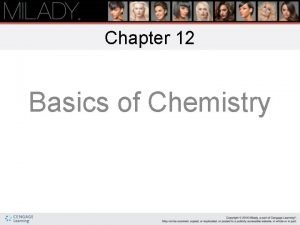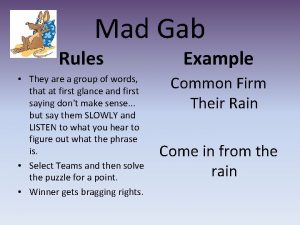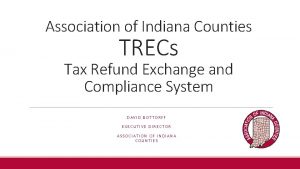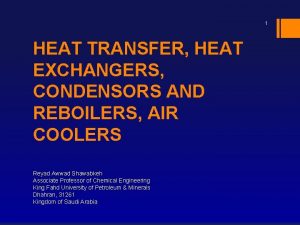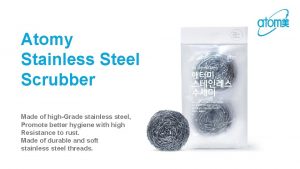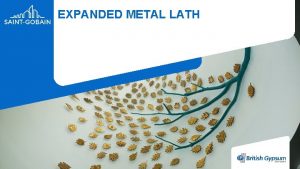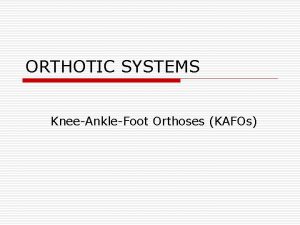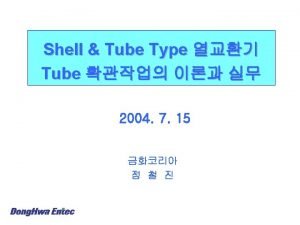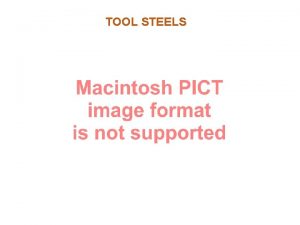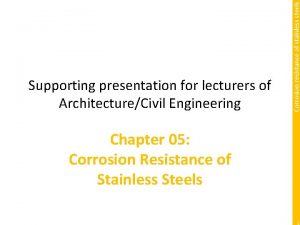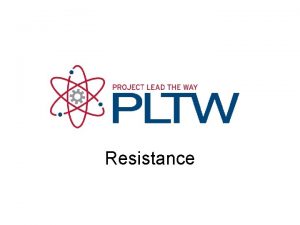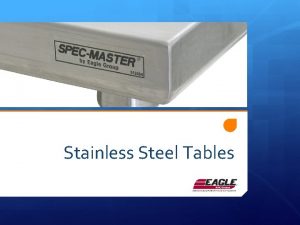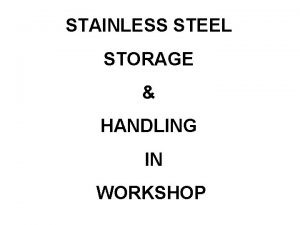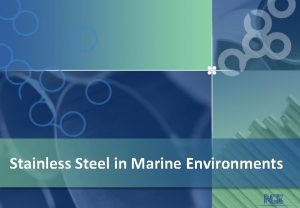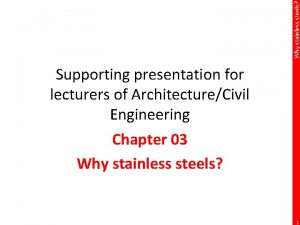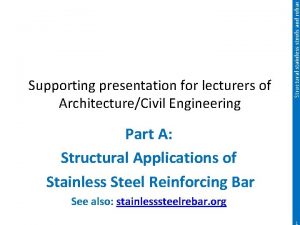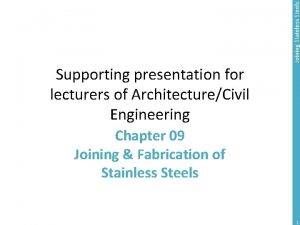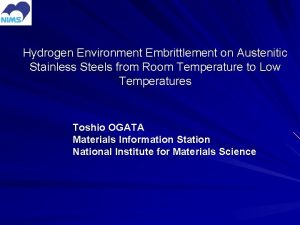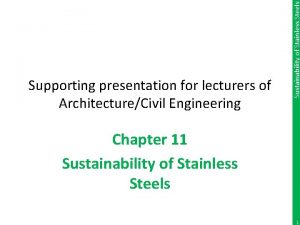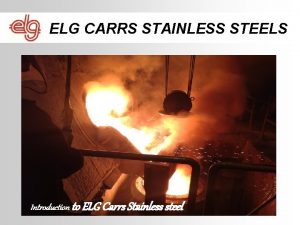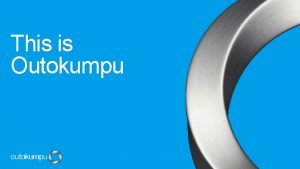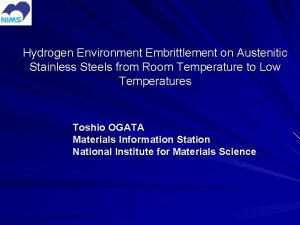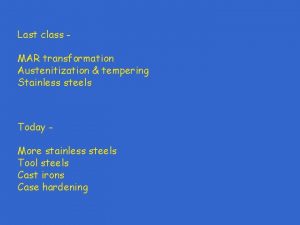STAINLESS STEELS The stainless steels owe their resistance


















- Slides: 18

STAINLESS STEELS The stainless steels owe their resistance to corrosion to the presence of chromium. Brearley discovered this fact more or less accidentally in 1913. New York's Chrysler Building



A simple classification of the stainless steels is: Hardenable alloys 1. 12 -14 % Cr, whose mechanical properties are largely dependent on the carbon content. High strength is combined with considerable corrosion resistance 2. Secondary hardening , 10 -12% Cr, 0. 12% C, with small additions Mo, V, Nb, Ni; a steel with ultimate stress of 927 MPa is used for gas turbine blades. 3. High chromium steel 17% Cr, 0. 15% C, 2. 5% Ni (431 S 29). It has a higher resistance to corrosion It is used for pump shafts, valves and fittings subjected to high temperature and high-pressure steam, but is unsuitable for acid conditions. 4. High carbon, 0. 8 C, 16. 5 Cr, 0. 5 Mo steel (oil quenched at 1025°C and tempered at 100 C to give hardness of 700 HB) is used for stainless ball bearings and instruments such as scalpels.

Ferritic iron 16/18% Cr rustless iron with low carbon content It has high resistance to corrosion but low impact and cannot be refined by heat-treatment alone. Prolonged service at 480°C can cause embrittlement. 25/30% Cr for furnace parts, resistant to sulphur compounds. Forms sigma phase additions of Nb and Mo prevent excessive grain growth. Austenitic steels 1. Plain 18/8 Austenitic Steels, 2. Soft Austenitic, 3. Decay-proof Steel, 4. Special Purpose Austenitic Steels, 5. High Manganese Steel, 6. Heat-resisting Steels, 7. Precipitation-hardening high tensile steels 8. a) martensitic, b) Semi Austenitic c) Austenitic,

Effects of Chromium and Nickel It will be readily appreciated that chromium is the chief alloying element in iron and steel for inhibiting corrosion. This resistance is not due to the inertness of the chromium, for it combines with oxygen with extreme rapidity, but the oxide so formed is very thin and stable, continuous and impervious to further attack. This property is, fortunately, conferred upon its solid solution in iron, becoming very marked as the amount exceeds 12 % in low carbon steels. Thus, in oxidising environments, such as nitric acid, the high chromium steel is initially attacked at the same rate as ordinary plain steel, but it rapidly builds up an oxide film, known as a self-healing passive-film, which efficiently protects the underlying metal. Nickel has a low solubility in these acids and thus, with 8 to 10 % of nickel in addition to chromium, the steel is immune from attack by nitric acid and the resistance to the other acids is markedly increased. Hence it is very evident why the 18/8 steels have such extensive uses. Their resistance to particular acids have been further improved by additions of elements such as molybdenum and copper.

Martensitic stainless steels are not as corrosion resistant as the other two classes, but are extremely strong and tough as well as highly machinable, and can be hardened by heat treatment. They contain 11. 5 to 18% Cr and significant amounts of C 0. 1 -0. 65% The high carbon enables the material to be hardened by heating to a high temperature, followed by rapid cooling (quenching). Martensitic types offer the ideal combination of corrosion resistance and superior mechanical properties, as produced by heat treatment to develop maximum hardness, strength and resistance to abrasion and erosion. The martensitic grades are usually sold in the soft state. This allows the customers to cut or form the parts before they are thermally hardened. End uses include cutlery, scissors, surgical instruments, wear plates, garbage disposal shredder lugs, and industrial knives.


Ferritic 12 - 30% Cr, at all T Advantages • Cheap (no Nickel) • Slightly less corrosion resistance than austenitic • Less susceptible to stress corrosion cracking (SCC) Restricted use because • Lack of ductililty: poor formability • Notch sensitivity • DBTT BCC • Poor weldability no phase change: large g. s. in HAZ can reduce steel toughness • Low C solubility: easy carbide formation and sensitivity use low C grades or stabilized grades Ti/Nb

Standard ferritic stainless steel • Relatively low toughness at low temperature and poor weldability (due to large grain size) – limited acceptance for structural applications • Used mainly in non-structural applications, such as automotive, appliance and luggage trim which require good resistance to corrosion and bright highly polished finishes


Austenitic The commonest austenitic steel is so-called 18/8 containing around 18% Cr and 8% Ni It has the lowest Ni content concomitant with a fully austenitic structure. 18/8 stainless steel owes its wide application to its excellent general resistance to corrosive environments. However, this is substantially improved by increasing the Ni content, and increasing the Cr gives greater resistance to intergranular corrosion. The austenitic steels are not very strong materials. Typically their 0. 2% proof stress is about 250 MPa and the tensile strength between 500 and 600 MPa. However, austenitic steels possess very good ductility with elongations of about 50% in tensile tests.

Austenitic steels are prone to stress corrosion cracking, particularly in the presence of Cl- ions where a few ppm can sometimes prove disastrous. This is a type of failure which occurs in some corrosive environments under small stresses, either deliberately applied or as a result of residual stresses in fabricated material. Type 316 steel contains 2 -4% Mo, which gives a substantial improvement in general corrosion resistance, particularly in resistance to pitting corrosion, which can be defined as local penetrations of the corrosion resistant films and which occurs typically in chloride solutions. Recently, some resistant grades with as much as 6. 5% Mo have been developed, but the Cr must be increased to 20% and the Ni to 24% to maintain an austenitic structure. Corrosion along the grain boundaries can be a serious problem, particularly when a high temperature treatment such as welding allows precipitation of Cr 23 C 6 in these regions. To combat this effect some grades of austenitic steel, are made with C < 0. 03% and designated “L”. Alternatively, Nb or Ti is added in excess of the stoichiometric amount to combine with C


Duplex stainless steels Between the austenite and ferrite phase fields there is a (a+g) region which can be used to obtain two-phase or duplex structures in stainless steels. The structures are produced by having the correct balance between a forming elements (Mo, Ti, Nb, Si, Al) and the g forming elements (Ni, Mn, C and N). To achieve a duplex structure, it is normally necessary to increase the Cr content to above 20%. However the exact proportions of (a+g) are determined by the heat treatment. It is clear from consideration of the g loop section of the equilibrium diagram, that holding in the range 1000 -1300°C will cause the ferrite content to vary over wide limits. The usual treatment is carried out between 1050 and 1150°C, when the ferrite content is not very sensitive to the subsequent cooling rate.

The duplex steels are stronger than the simple austenitic steels, partly as a result of the two-phase structure and also because this also leads normally to a refinement of the grain size. Indeed, by suitable thermomechanical treatment between 900°C and 1000°C, it is possible to obtain very fine microduplex structures which can exhibit superplasticity, i. e. very high ductilities at high temperatures, for strain rates less than a critical value. Typically twice the yield of austenitic stainless steels. Minimum Specified UTS typically 680 to 750 N/mm 2. Elongation typically > 25%. A further advantage is that duplex stainless steels are resistant to solidification cracking, particularly that associated with welding. While the presence of ferrite may have an adverse effect on corrosion resistance in some circumstances, it does improve the resistance of the steel to transgranular stress corrosion cracking as the ferrite phase is immune to this type of failure.

The main problem with Duplex is that it very easily forms brittle intermetalic phases, such as Sigma, Chi and Alpha Prime. These phases can form rapidly, typically 100 seconds at 900°C. Prolonged heating in the range 350 to 550°C can cause temper embrittlement. For this reason the maximum recommended service temperature for duplex is about 280°C. Duplex stainless steels have been used extensively in the onshore and offshore sectors of the oil and gas industry for over a decade. Another important areas of duplex stainless steel applications is shipbuilding Duplex grades have been utilised primarily for two reasons: • their corrosive resistance to the various corrosive media found in onshore/offshore environments, e. g. CO 2, H 2 S, chlorides, low p. H • their increased strength levels

Question: "I'm in the city business near Montreal, Canada. The new buses that we bought have a ferritic and martensitic stainless steel structure - a combination of 410, 304 and 204. The structure is essentially made of tubular HSS. After 3 months of use, the stainless steel structure began to rust(during winter, here there is a lot of calcium on the road). Should I be concerned about that? Usually a bus should last 16 years. Do we have to do something to protect the structure as we do with a carbon steel structure? Or will the rust stay at a superficial level? What details do you need to be able to tell if the 41003 stainless steel will continue to corrode or not? Which conditions will affect the corrosion of the 41003? ” Answer: You have referred to three different stainless steels comprising the bus structure, all with different corrosion resistances. Of the three, 410 should be the least resistant to corrosion pitting. Without more details, it is not possible to tell for certain whether the steels will continue to corrode or not. However, given the right conditions, the 410 may experience continued weight loss with time. Information needed includes detailed knowledge of the environment, i. e. , duration and extent of exposure, wet/dry cycles, temperature, exposure to salts, type of salts etc. (more than can typically be done justice in a discussion forum format). The anticipated most aggressive corrosive species are chloride salts. It should be understood that the presence of water is required.
 Adarsh nagar
Adarsh nagar Shridhar steels pvt ltd
Shridhar steels pvt ltd Chapter 12 basics of chemistry cosmetology
Chapter 12 basics of chemistry cosmetology Constant rate filtration and constant pressure filtration
Constant rate filtration and constant pressure filtration Friction and air resistance
Friction and air resistance Nepomucyn
Nepomucyn You owe nothing to anyone
You owe nothing to anyone William graham sumner what social classes owe to each other
William graham sumner what social classes owe to each other I owe you an apology
I owe you an apology Mad gab rules
Mad gab rules Trecs local government clearinghouse
Trecs local government clearinghouse Venerate the plough meaning
Venerate the plough meaning You owe nothing to anyone
You owe nothing to anyone Standard heat exchanger
Standard heat exchanger Atomy scrubber
Atomy scrubber Eml ceiling
Eml ceiling Orthotic knee joint stainless steel ring drop lock
Orthotic knee joint stainless steel ring drop lock Stainless slide exporter
Stainless slide exporter P number material
P number material
